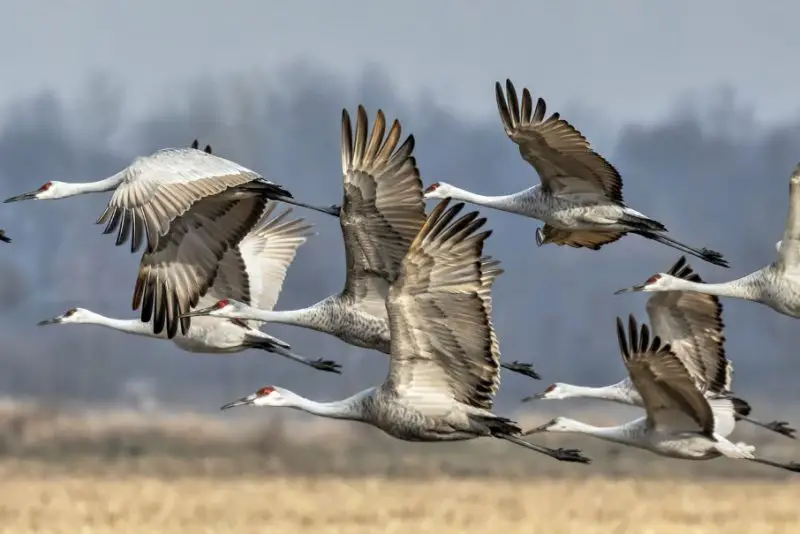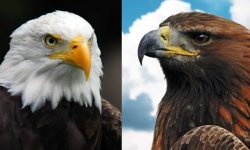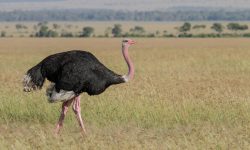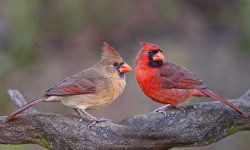Every year, millions of birds travel thousands of miles between their breeding and wintering grounds with astonishing precision. What makes this even more incredible is that they do so without GPS, maps, or human guidance. The question that fascinates both scientists and birdwatchers is: how do migrating birds know where to go?
Understanding how birds navigate during migration involves exploring their biological instincts, celestial awareness, magnetic sensing, and even learned experience. This article breaks down these fascinating mechanisms and explains how birds find their way across continents and oceans with such remarkable accuracy.
The Mystery of Bird Migration

Migration is a complex behavioral pattern that has evolved over millions of years. Birds migrate primarily in search of better feeding conditions, suitable breeding grounds, and favorable climates. But what’s truly mysterious is not just the act of migration—it’s the incredible sense of direction birds seem to possess.
From tiny hummingbirds flying solo across the Gulf of Mexico to Arctic terns traveling from pole to pole, each species follows routes that have been used for generations. Scientists have studied migration using banding, satellite tracking, and radar to understand how these routes are maintained with such precision.
The consistency of these migratory paths suggests that birds use a combination of innate biological programming and environmental cues to guide them. In essence, their navigational skills are part instinct, part learned, and part environmental awareness.
The Role of Innate Instincts
One of the most significant factors behind bird migration is innate instinct. Many species are born with genetic programming that drives them to migrate. Even young birds raised in captivity, away from their parents, often attempt to migrate at the correct season and in the correct direction.
These instincts are controlled by hormonal changes triggered by environmental factors such as daylight length and temperature. When days grow shorter in autumn, hormones stimulate restlessness—known as “zugunruhe”—which prompts birds to start their long journey.
While innate instincts determine the general timing and direction, they don’t explain how birds follow specific routes or locate precise destinations. For that, other navigational tools come into play.
Celestial Navigation: Using the Sun and Stars
Birds are remarkable celestial navigators. Many species use the sun during the day and stars at night to maintain their sense of direction. This ability, known as celestial navigation, is one of the oldest natural navigation systems on Earth.
During the day, birds can determine direction by tracking the position of the sun and adjusting for its movement across the sky. Experiments have shown that when the sun’s position is artificially altered, birds adjust their orientation accordingly, proving their reliance on solar cues.
At night, nocturnal migrants like thrushes and warblers use constellations to navigate. In planetarium studies, scientists found that when the night sky was rotated, birds changed their orientation, demonstrating that they use the stars as a celestial compass to stay on course.
Magnetic Fields: The Invisible Map
One of the most fascinating discoveries in ornithology is that birds can sense the Earth’s magnetic field. This magnetic perception, or magnetoreception, acts like an invisible map that helps them orient themselves even when visual cues are unavailable.
Inside a bird’s beak or brain, scientists have found iron-based structures called magnetite, which may allow them to detect the Earth’s magnetic pull. This internal compass gives them a sense of direction—north, south, east, and west—especially during cloudy or moonless nights.
Furthermore, research suggests that some birds “see” magnetic fields as visual patterns, possibly through specialized cells in their eyes sensitive to blue light. This dual system allows birds to combine magnetic cues with visual landmarks for precise navigation.
Landmarks and Geographic Cues
In addition to celestial and magnetic tools, birds also rely on geographic landmarks during migration. Rivers, mountain ranges, coastlines, and even human-made features like highways can act as navigational aids.
Large migratory birds such as geese and cranes often follow valleys or coastlines, which provide visual reference points. Experienced individuals in a flock may remember these routes from previous journeys and guide younger birds along the same path.
This memory-based navigation demonstrates that migration is not purely instinctive—it’s also learned through experience. Birds that migrate in flocks benefit from shared knowledge, while solitary migrants rely more on their internal compasses and visual landmarks.
The Role of the Sun Compass
Apart from using the sun’s position, some birds employ an internal sun compass mechanism that compensates for the sun’s movement throughout the day. They know how to adjust their direction depending on the time, maintaining their course even as the sun changes position in the sky.
This internal clock-based navigation relies on the bird’s circadian rhythm, which is synchronized with the daily cycle of light and darkness. If their internal clock is shifted artificially, their migration direction also shifts, proving how strongly their navigation depends on this biological timekeeping.
The sun compass is particularly effective during long-distance migrations, allowing birds to maintain consistent headings even over vast and unfamiliar terrains.
Learning Through Experience
Although much of migration is instinctual, learning plays a crucial role, especially for species that travel in social groups. Young birds often learn the exact routes, landmarks, and stopover points by following experienced adults.
For example, young cranes that migrate with their parents can later retrace the same route on their own. This shows that memory and experience are critical parts of migration, supplementing instinct and magnetic guidance.
Some species also adapt to environmental changes by learning new routes when old ones become unsuitable. Over time, this flexibility helps bird populations survive in changing landscapes and climates.
Olfactory Navigation: The Sense of Smell
Recent research has revealed another surprising tool in a bird’s navigational toolkit—the sense of smell. Certain seabirds and pigeons can detect atmospheric odors and use them as part of a “smell map” to determine their location.
For instance, homing pigeons have been shown to rely on familiar odors from specific regions to orient themselves when visual cues are absent. They essentially build a mental map of smells that correspond to different areas.
This olfactory navigation is especially useful for species that migrate across large oceanic expanses, where landmarks are scarce and other cues may be unreliable.
Migration Routes: Flyways and Pathways
Globally, bird migration follows several major pathways known as flyways. These are established routes that millions of birds use each year to move between breeding and wintering grounds.
The most well-known flyways include the Pacific, Central, Mississippi, and Atlantic Flyways in North America, as well as the East Asian–Australasian and African–Eurasian routes. Birds follow these paths because they offer abundant food, suitable resting spots, and favorable wind conditions.
Each species has its preferred route, which may shift slightly year by year depending on weather, habitat changes, and food availability. Despite these variations, the overall flyway structure remains remarkably stable across generations.
The Influence of Weather and Winds
Weather plays a significant role in determining migration timing and success. Favorable winds can greatly assist birds by reducing energy expenditure, while storms or headwinds can cause delays or detours.
Many migratory species wait for optimal wind patterns before taking off. For example, hawks and eagles rely on thermal updrafts—rising columns of warm air—to soar with minimal effort. Shorebirds, on the other hand, may take advantage of tailwinds to cross oceans faster.
Understanding weather patterns is critical for migratory success. Some birds can even detect changes in air pressure, helping them anticipate storms and adjust their flight paths accordingly.
The Role of the Moon and Polarized Light
Birds also use polarized light patterns, especially during twilight, as a navigational cue. The light scattering in the atmosphere creates polarization patterns that are invisible to humans but visible to birds.
These patterns provide orientation information, particularly when other cues like the sun or stars are not visible. In addition, the moon’s position and brightness can serve as nighttime navigation aids for some species.
Combined with their magnetic and celestial compasses, polarized light helps birds maintain a steady course, even under variable lighting conditions such as dawn, dusk, or cloudy skies.
Energy Management and Stopover Strategies
Long-distance migration requires enormous energy. Birds prepare for their journey by building up fat reserves, sometimes doubling their body weight before departure. These fat stores serve as vital fuel for sustained flight.
During migration, many species make planned stopovers at specific locations to rest and refuel. Wetlands, coastal areas, and forests often become critical resting spots where birds can replenish energy before continuing.
Understanding these stopover sites is essential for conservation because habitat loss at these locations can disrupt entire migration cycles, putting species at risk of decline.
How Young Birds Find Their Way
A fascinating question in migration science is how young birds—especially those that migrate alone—find their way on their first journey. Many juvenile birds are born with an innate compass that gives them a general sense of direction and distance.
For example, young European robins raised in captivity still orient themselves southward during migration season. However, without experienced adults to guide them, they may not reach the exact destination, stopping short or overshooting the target.
Over time, these young birds refine their routes through experience and environmental learning, gradually improving accuracy in subsequent migrations.
Migration and Climate Change
Climate change poses new challenges to bird migration. Shifts in temperature, food availability, and weather patterns can disrupt timing and alter traditional routes. Birds that migrate based on daylight cues may arrive too early or too late for optimal feeding and breeding conditions.
For instance, some species are now wintering closer to their breeding grounds because milder winters reduce the need for long-distance travel. Others struggle to adapt, leading to population declines.
Conservation efforts now focus on maintaining migratory corridors, protecting key stopover habitats, and monitoring climate-driven changes in migration behavior.
Technological Insights: Tracking Bird Migration
Modern technology has revolutionized our understanding of migration. Satellite tracking, GPS tagging, and miniature geolocators now allow scientists to follow birds across continents with unprecedented accuracy.
These technologies have revealed surprising details—such as bar-tailed godwits flying nonstop for over 7,000 miles from Alaska to New Zealand. They’ve also shown how different populations within the same species may take distinct routes depending on wind and habitat conditions.
Such insights are invaluable for conservation planning and for unraveling the mysteries of how birds combine multiple navigation systems to complete their extraordinary journeys.
The Power of Instinct and Adaptation
The remarkable navigational abilities of migrating birds showcase the power of instinct and adaptation. Evolution has equipped them with multiple sensory systems—magnetic, visual, olfactory, and cognitive—that work together seamlessly.
This redundancy ensures that if one cue becomes unreliable (like cloudy skies obscuring stars), others can still guide the journey. It’s a sophisticated network of biological tools fine-tuned over millions of years.
What’s even more inspiring is how these instincts coexist with flexibility. Birds can adjust their routes, learn new landmarks, and even adapt to environmental changes, proving that migration is both ancient and ever-evolving.
Why Understanding Bird Migration Matters
Studying migration isn’t just about solving scientific mysteries—it’s vital for conservation and ecological balance. Migratory birds connect ecosystems across continents, spreading seeds, controlling insects, and enriching biodiversity.
By understanding how they navigate and what challenges they face, scientists can better protect the habitats they depend on. This knowledge also helps humans appreciate the delicate balance of nature that sustains both bird populations and global ecosystems.
Each migration season is a testament to the resilience of life—a journey that reminds us of the deep connection between instinct, the environment, and survival itself.
Conclusion
So, how do migrating birds know where to go? The answer lies in a remarkable combination of instinct, celestial cues, magnetic fields, learned experience, and environmental awareness. Birds are equipped with an internal toolkit that rivals modern navigation systems in accuracy and adaptability.
Their migration is not only a triumph of biology but also a symbol of endurance and natural intelligence. As technology advances, we continue to uncover more about their hidden abilities—but one truth remains: migration is one of the greatest wonders of the natural world.
The next time you see a flock flying overhead, remember that each bird knows exactly where it’s going—guided by nature’s most extraordinary compass.






